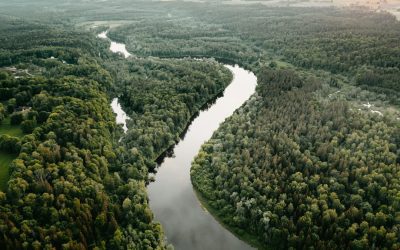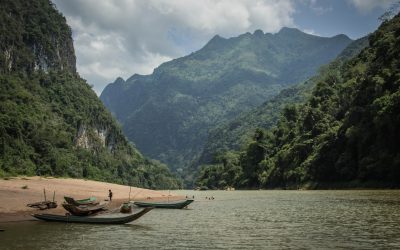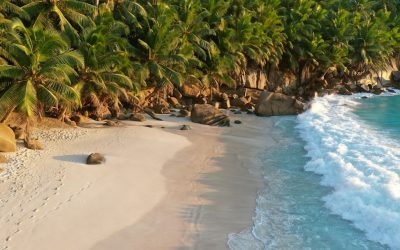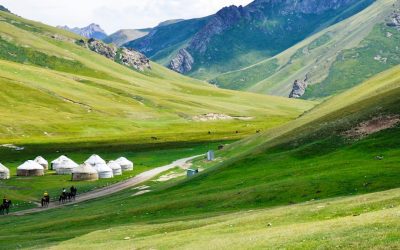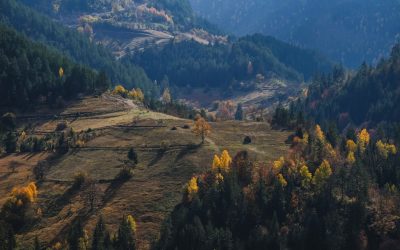World Geography
Geography is the study of the Earth’s landscapes, environments, and the relationships between people and their surroundings. It encompasses both the physical aspects of the Earth, such as its landforms, bodies of water, and climate, as well as the human aspects, including population distribution, cultures, and economies. World geography is a broad field that seeks to understand the complexities of our planet and how humans interact with it. By studying world geography, we can gain a deeper appreciation for the diversity of our planet and the interconnectedness of its various regions.
Geography is a multidisciplinary field that draws on elements of physical science, social science, and humanities. It involves the use of maps, spatial analysis, and geographic information systems (GIS) to understand the Earth’s surface and the processes that shape it. World geography also encompasses the study of human geography, which examines the ways in which people and their activities are distributed across the Earth. By understanding world geography, we can better appreciate the environmental, cultural, and economic challenges facing different regions of the world. This knowledge is crucial for addressing global issues such as climate change, resource management, and international development.
The Five Oceans and Seven Continents
The Earth’s surface is divided into five major oceans: the Pacific, Atlantic, Indian, Southern (or Antarctic), and Arctic Oceans. These vast bodies of water play a crucial role in regulating the Earth’s climate and supporting diverse marine ecosystems. The oceans also serve as important transportation routes and a source of food and other natural resources for human societies around the world.
In addition to the oceans, the Earth’s landmasses are divided into seven continents: Africa, Antarctica, Asia, Europe, North America, Australia (or Oceania), and South America. Each continent has its own unique physical and cultural characteristics, shaped by millions of years of geological processes and human history. From the deserts of Africa to the rainforests of South America, the continents offer a rich tapestry of landscapes and environments for exploration and study.
Major Mountain Ranges and Deserts
The Earth’s surface is also marked by major mountain ranges and deserts that have shaped the planet’s physical and cultural landscapes. The Himalayas, for example, are the highest mountain range in the world and are home to diverse ecosystems and cultures in countries such as India, Nepal, and Bhutan. The Andes in South America, the Rockies in North America, and the Alps in Europe are other prominent mountain ranges that have influenced human settlement patterns and economic activities.
Deserts cover about one-third of the Earth’s land surface and are characterized by low precipitation and extreme temperatures. The Sahara Desert in Africa is the largest hot desert in the world, while the Gobi Desert in Asia is one of the largest cold deserts. Deserts are not only home to unique flora and fauna but have also been important trade routes and cultural crossroads throughout history.
Climate Zones and Biomes
The Earth’s climate is influenced by a variety of factors, including latitude, altitude, ocean currents, and prevailing winds. As a result, the planet is divided into different climate zones, each with its own characteristic weather patterns and ecosystems. The equator, for example, experiences a tropical climate with high temperatures and heavy rainfall, while the polar regions have a cold and dry climate.
These climate zones give rise to different biomes, or large ecological areas characterized by distinct plant and animal communities. The tropical rainforest biome, found near the equator, is home to a diverse array of species and is vital for regulating the Earth’s climate. The grasslands biome, found in regions such as the African savannah and North American prairies, supports grazing animals and has been important for human agriculture throughout history.
Human Geography and Population Distribution
Human geography examines the ways in which people and their activities are distributed across the Earth’s surface. It encompasses topics such as population growth, migration patterns, urbanization, and cultural diversity. Understanding human geography is crucial for addressing global challenges such as poverty, inequality, and environmental degradation.
Population distribution is uneven across the world, with some regions experiencing rapid population growth while others are declining. The majority of the world’s population lives in Asia, particularly in countries such as China and India. Urban areas are also growing rapidly, with more than half of the world’s population now living in cities. This trend has significant implications for infrastructure development, resource management, and social inequality.
Historical and Cultural Geography
Historical geography examines how human activities have shaped the Earth’s landscapes over time. It explores topics such as colonialism, trade routes, and the rise and fall of empires. Cultural geography focuses on how human cultures have developed in different regions of the world and how they interact with their environments.
The Silk Road, for example, was an ancient trade route that connected China with Europe and facilitated the exchange of goods, ideas, and technologies across Eurasia. This historical trade route had a profound impact on the development of cultures and economies along its path. Similarly, cultural geographers study how different societies have adapted to their environments through practices such as agriculture, architecture, and religious beliefs.
The Importance of Geographic Knowledge
Geographic knowledge is crucial for addressing global challenges such as climate change, resource management, and international development. By understanding world geography, we can better appreciate the environmental, cultural, and economic challenges facing different regions of the world. This knowledge is crucial for addressing global issues such as climate change, resource management, and international development.
Geographic knowledge also helps us to understand our interconnectedness with other regions of the world. By studying world geography, we can gain a deeper appreciation for the diversity of our planet and the interconnectedness of its various regions. This understanding can foster a sense of global citizenship and empathy for people from different cultures and backgrounds.
In conclusion, world geography is a complex and multifaceted field that encompasses both physical and human aspects of the Earth’s landscapes. By studying world geography, we can gain a deeper appreciation for the diversity of our planet and the interconnectedness of its various regions. This knowledge is crucial for addressing global challenges such as climate change, resource management, and international development. It also helps us to understand our interconnectedness with other regions of the world and fosters a sense of global citizenship.
FAQs
What is world geography?
World geography is the study of the Earth’s landscapes, environments, and the relationships between people and their environments. It encompasses the physical features of the Earth, as well as the human activity that takes place on it.
Why is world geography important?
World geography is important because it helps us understand the world around us. It provides insights into the physical and human processes that shape our planet, and helps us make informed decisions about how to interact with our environment.
What are the main branches of world geography?
The main branches of world geography include physical geography, which focuses on the Earth’s natural features and processes, and human geography, which examines the relationships between people and their environments.
How does world geography impact our daily lives?
World geography impacts our daily lives in numerous ways, from influencing the weather and climate we experience, to shaping the availability of natural resources and influencing the distribution of populations and cultures around the world.
What are some key concepts in world geography?
Key concepts in world geography include location, place, human-environment interaction, movement, and region. These concepts help geographers understand and interpret the world around them.
Discovering the Charms of Lebanon: A Journey Through its Rich Culture and Scenic Beauty
Lebanon, a small country located in the Middle East, is often referred to as the “Switzerland of the Middle East” due to its stunning natural beauty and diverse cultural heritage. Nestled between the Mediterranean Sea and the mountains, Lebanon offers a unique blend of history, culture, and breathtaking landscapes that make it a must-visit destination for travelers. With a history dating back thousands of years, Lebanon has been influenced by various civilizations and empires, including the Phoenicians, Romans, Byzantines, and Ottomans. This rich history is evident in the country’s architecture, archaeological sites, and cultural traditions. Lebanon is also known for its vibrant culture, with music, dance, and art playing a significant role in the daily lives of its people. The country hosts numerous festivals and events throughout the year, showcasing its diverse cultural scene and attracting artists and performers from around the world. Summary Lebanon is a charming destination with a rich history, vibrant culture, scenic beauty, culinary delights, religious diversity, unique architecture, warm hospitality, and thriving nightlife. A walk through Lebanon’s history reveals the influence of various civilizations, including the Phoenicians, Romans, Ottomans, and French. Lebanon’s culture is expressed through music, dance, and art, with traditional forms like dabke and modern genres like Arabic pop. Lebanon’s scenic beauty includes mountains, beaches, and valleys, with highlights like the Jeita Grotto and the Cedars of God. Lebanon’s cuisine is a food lover’s paradise, with dishes like tabbouleh, hummus, and shawarma, and drinks like arak and Lebanese wine. A Walk Through the Rich History of Lebanon Lebanon’s history is a tapestry woven with the threads of ancient civilizations and empires. From...
Discovering the Hidden Gems of Singapore: A British Perspective
Singapore, often referred to as the “Lion City,” is a vibrant and diverse travel destination that offers a unique blend of cultures, cuisines, and attractions. While it may not be the first place that comes to mind for British travellers, Singapore is a hidden gem that should not be overlooked. From its colonial heritage to its natural beauty and bustling cityscape, there are countless reasons why British travellers should consider visiting Singapore. Summary Singapore is a hidden gem for British travellers, offering a unique blend of colonial heritage, culture, cuisine, natural beauty, and modern attractions. Exploring Singapore’s colonial heritage from a British perspective is a must-do, with iconic landmarks like Raffles Hotel and the National Museum of Singapore. Singapore’s unique culture and cuisine are a feast for the senses, with hawker centres, street food, and Michelin-starred restaurants to discover. Uncovering Singapore’s natural beauty is easy with its many parks, gardens, and wildlife reserves, including the iconic Gardens by the Bay and Singapore Zoo. Singapore’s hidden bars and restaurants offer a taste of the city’s vibrant nightlife, with speakeasies, rooftop bars, and local haunts to explore. Exploring Singapore’s Colonial Heritage: A British Perspective Singapore has a rich colonial history that dates back to the 19th century when it was a British trading post. The influence of the British can still be seen today in the city’s architecture, landmarks, and cultural traditions. One must-visit colonial landmark is Raffles Hotel, which was named after Sir Stamford Raffles, the founder of modern Singapore. This iconic hotel has been a symbol of luxury and elegance since it first opened its doors in 1887. Another...
Exploring the Baltic Gem: A Trip to Latvia
Located in the Baltic region of Northern Europe, Latvia is a country that often goes unnoticed by travellers. However, this hidden gem has so much to offer to those who are willing to explore it. With a rich history, stunning natural landscapes, delicious cuisine, and a vibrant art scene, Latvia is a great travel destination for those seeking something off the beaten path. Latvia has a fascinating history that dates back thousands of years. It has been influenced by various cultures and empires throughout the centuries, including the Vikings, Germans, Swedes, and Russians. This diverse history is reflected in Latvia’s architecture, traditions, and cultural heritage. In recent years, Latvia has gained popularity among travellers for its affordability and authenticity. Unlike some of its neighbouring countries, Latvia has managed to preserve its traditional way of life and charm. From its picturesque countryside to its vibrant cities, Latvia offers a unique travel experience that is sure to leave a lasting impression. Summary Latvia is a hidden gem in the Baltic region, offering rich history, natural beauty, delicious cuisine, and unique festivals and traditions. Visitors can discover Latvia’s rich history and culture through its museums, castles, and UNESCO World Heritage sites. The best places to visit in Latvia include the capital city of Riga, the countryside, and the coastal town of Jurmala. Latvia’s natural beauty can be explored through its lakes, forests, and beaches, with opportunities for hiking, swimming, and boating. Latvia’s cuisine is a blend of Eastern and Western flavours, with traditional dishes like grey peas and bacon and modern fusion cuisine. Discovering Latvia’s Rich History and Culture Latvia’s cultural heritage...
Exploring the Untouched Beauty of Sierra Leone: A Journey Through the Hidden Gems of West Africa
Sierra Leone, located on the west coast of Africa, is often overlooked as a travel destination. However, this hidden gem has so much to offer to adventurous travelers seeking unspoiled beauty and rich cultural experiences. From pristine beaches to lush rainforests, from vibrant music and dance scenes to delicious cuisine, Sierra Leone has something for everyone. In this article, we will explore the various hidden gems of Sierra Leone and why it should be on your travel radar. Summary Sierra Leone is a hidden gem in West Africa with unspoiled beaches, rich culture, and unexplored rainforests. The beaches of Sierra Leone are pristine and offer a peaceful escape from the hustle and bustle of city life. Sierra Leone has a rich history and culture that is worth exploring, from its colonial past to its vibrant music and dance scene. Trekking through the rainforests of Sierra Leone is a unique experience that allows you to discover the country’s diverse wildlife and natural beauty. Sierra Leone’s national parks are home to a variety of wildlife, including chimpanzees, elephants, and rare birds, making it a great destination for wildlife watching. Discovering the Unspoiled Beaches of Sierra Leone One of the biggest draws of Sierra Leone is its stunning coastline and unspoiled beaches. With over 400 kilometers of coastline, there are plenty of options for beach lovers to choose from. The beaches in Sierra Leone are known for their white sand, crystal-clear waters, and lack of crowds. Whether you’re looking for a secluded spot to relax or want to try your hand at water sports like surfing or snorkeling, Sierra Leone’s beaches have...
Discovering the Hidden Gems of Laos: A Journey Through Southeast Asia’s Enchanting Land
Laos, officially known as the Lao People’s Democratic Republic, is a landlocked country in Southeast Asia. It is bordered by Myanmar (Burma) and China to the northwest, Vietnam to the east, Cambodia to the southeast, and Thailand to the west. Despite being a relatively small country, Laos is rich in natural beauty, cultural heritage, and historical significance. From the ancient temples of Luang Prabang to the remote villages of northern Laos, this country offers a unique and unforgettable travel experience. Laos is often referred to as the “Land of a Million Elephants” due to its historical association with these majestic creatures. The country is known for its stunning landscapes, including lush mountains, cascading waterfalls, and the mighty Mekong River. It is also home to a diverse range of ethnic groups, each with their own distinct traditions and customs. This cultural diversity is reflected in the country’s cuisine, festivals, and handicrafts. Summary Laos is a beautiful and mysterious destination in Southeast Asia. Luang Prabang is a cultural hub with rich history and traditions. Vang Vieng offers natural wonders and adventure activities for thrill-seekers. Vientiane is the spiritual heart of Laos, with many temples and religious sites to explore. The Plain of Jars is a fascinating journey through ancient history and culture. Exploring the Cultural Riches of Luang Prabang One of the must-visit destinations in Laos is Luang Prabang, a UNESCO World Heritage Site. This ancient city is located in northern Laos and is known for its well-preserved architecture, Buddhist temples, and traditional way of life. Luang Prabang was once the capital of the Kingdom of Laos and served as an...
Discovering the Hidden Gems of Seychelles: A Journey Through Paradise
Seychelles is a tropical paradise located in the Indian Ocean, off the eastern coast of Africa. It is an archipelago consisting of 115 islands, each offering its own unique beauty and charm. With its pristine beaches, crystal-clear waters, and lush greenery, Seychelles is a dream destination for beach lovers and nature enthusiasts alike. The climate in Seychelles is warm and tropical year-round, with temperatures ranging from 24 to 32 degrees Celsius. The islands are blessed with abundant sunshine and gentle sea breezes, making it the perfect place to relax and unwind. The culture of Seychelles is a melting pot of influences from Africa, Europe, and Asia, creating a vibrant and diverse society. Summary Seychelles is a tropical paradise with pristine beaches, rich wildlife, cultural heritage, local cuisine, and exciting activities. The beaches of Seychelles are some of the most beautiful in the world, with crystal-clear waters and white sand. Seychelles is home to a diverse range of wildlife, including giant tortoises, rare birds, and marine life. The cultural heritage of Seychelles is a blend of African, European, and Asian influences, with unique traditions and festivals. Seychelles’ local cuisine is a fusion of Creole, French, and Indian flavors, with fresh seafood and tropical fruits. Exploring the Pristine Beaches of Seychelles Seychelles is renowned for its stunning beaches, each with its own unique features and attractions. Anse Source d’Argent on La Digue Island is often considered one of the most beautiful beaches in the world. It boasts powdery white sand, towering granite boulders, and crystal-clear turquoise waters. The beach is also known for its shallow lagoons, making it ideal for swimming...
Discovering the Hidden Gems of Kyrgyzstan: A Journey Through Central Asia’s Best-Kept Secret
Nestled in the heart of Central Asia, Kyrgyzstan is a country that often goes unnoticed by travelers. However, those who do venture to this hidden gem are rewarded with a wealth of cultural richness, natural wonders, and unique experiences. From its diverse cultural influences to its stunning landscapes, Kyrgyzstan offers a truly unforgettable travel experience. Summary Kyrgyzstan offers hidden treasures waiting to be discovered by adventurous travellers. The country’s cultural richness is a unique blend of Eastern and Western influences. Exploring Kyrgyzstan’s natural wonders is a must for outdoor enthusiasts. The Silk Road legacy can be traced through the historical routes of Kyrgyzstan. Experiencing the nomadic traditions of the Kyrgyz people is a one-of-a-kind experience. The Cultural Richness of Kyrgyzstan: A Blend of East and West Kyrgyzstan is a melting pot of cultures, with influences from both the East and the West. The country’s history is marked by the Silk Road trade route, which brought merchants and travelers from all over the world. As a result, Kyrgyzstan has a rich tapestry of cultural influences, including Persian, Chinese, Russian, and Turkish. Visiting historical sites and museums is a great way to delve into Kyrgyzstan’s cultural heritage. The capital city of Bishkek is home to several museums that showcase the country’s history and art. The State Historical Museum provides an in-depth look at Kyrgyzstan’s past, while the Museum of Fine Arts displays a collection of traditional and contemporary artwork. For those interested in experiencing traditional music and dance performances, Kyrgyzstan offers a vibrant cultural scene. Traditional music is characterized by the use of traditional instruments such as the komuz (a three-stringed...
Exploring the Rich Culture and History of Serbia: A Journey Through the Heart of the Balkans
Serbia, located in the heart of the Balkans, is a country that often goes unnoticed by travelers. However, this hidden gem is a destination that should not be overlooked. With its rich history, diverse culture, and stunning natural landscapes, Serbia offers a unique and unforgettable travel experience. From the vibrant capital city of Belgrade to the picturesque countryside, Serbia has something to offer every type of traveler. In this article, we will explore the many facets of Serbia’s culture and history, and discover why it is a destination worth exploring. Summary Serbia is a land of contrasts and diversity, with a rich history and culture. Belgrade, Serbia’s vibrant capital city, is home to many cultural gems and attractions. Serbia’s natural landscapes, including mountains, rivers, and lakes, offer stunning beauty and outdoor activities. Serbian art and architecture showcase a rich legacy, from Byzantine to Baroque styles. Traditional Serbian cuisine is delicious and offers a unique culinary journey. Serbia: A Land of Contrasts and Diversity One of the most striking aspects of Serbia is its geographical and cultural diversity. From the fertile plains of Vojvodina in the north to the rugged mountains of the Dinaric Alps in the south, Serbia offers a wide range of landscapes to explore. Each region has its own distinct character and charm, from the cosmopolitan city of Belgrade to the medieval towns of Novi Sad and Nis. In addition to its geographical diversity, Serbia is also home to a rich tapestry of cultures and ethnicities. The country has been influenced by various civilizations throughout history, including the Romans, Byzantines, Ottomans, and Austro-Hungarians. This diverse heritage is...
Discovering the Hidden Gems of Kuwait: A Journey Through the Land of Contrasts
Kuwait, a small country located in the Arabian Peninsula, is often overlooked as a tourist destination. However, this hidden gem is a land of contrasts, offering a unique blend of rich cultural heritage, natural wonders, modern architecture, and a thriving art and design scene. With its fascinating history, vibrant culture, and warm hospitality, Kuwait is a must-visit destination for travelers seeking an authentic Arabian experience. Situated at the northern edge of the Arabian Gulf, Kuwait has a strategic location that has shaped its history and culture. The country has a rich history that dates back thousands of years, with evidence of human settlements dating back to the Bronze Age. Over the centuries, Kuwait has been influenced by various civilizations, including the Greeks, Persians, and Ottomans. In 1961, Kuwait gained independence from British rule and has since transformed into a modern and prosperous nation. Kuwait’s culture is deeply rooted in its Bedouin heritage and Islamic traditions. The people of Kuwait are known for their warm hospitality and generosity towards visitors. Traditional values such as respect for elders and strong family ties are still highly valued in Kuwaiti society. The country’s official language is Arabic, but English is widely spoken in urban areas. Summary Kuwait is a land of contrasts, with hidden gems waiting to be discovered. The country has a rich cultural heritage, with museums and historical sites to explore. From deserts to beaches, Kuwait offers a range of natural wonders to discover. Kuwait’s foodie scene is a hidden gem, with a diverse range of culinary experiences to enjoy. The country’s art and design scene is thriving, with a range...
Discovering the Vibrant Culture and Rich Heritage of Senegal: A Journey Through West Africa
Located on the westernmost point of the African continent, Senegal is a country that is rich in history, culture, and natural beauty. Bordered by Mauritania to the north, Mali to the east, Guinea to the southeast, and Guinea-Bissau to the southwest, Senegal has a diverse landscape that includes sandy beaches, lush forests, and the vast Sahel region. The country has a population of over 16 million people and is known for its warm and welcoming people. Senegal has a long and complex history that dates back thousands of years. It was once part of several ancient African kingdoms, including the Kingdom of Ghana and the Kingdom of Jolof. In the 15th century, European explorers arrived in Senegal, marking the beginning of the country’s colonial period. Senegal gained independence from France in 1960 and has since become a stable democracy. The culture of Senegal is a vibrant mix of African, French, and Arabic influences. The country is known for its traditional music and dance, delicious cuisine, and thriving art scene. Senegal is also home to several national parks and natural reserves, which are home to a diverse range of wildlife. Summary Senegal is a diverse and beautiful country with a rich history and culture. Dakar is a city with significant historical and cultural importance. Traditional music and dance are an integral part of Senegalese culture. Senegal’s cuisine is delicious and reflects the flavors of West Africa. Senegal’s ancient kingdoms hold many mysteries waiting to be uncovered. Exploring the Historical and Cultural Significance of Dakar Dakar, the capital city of Senegal, is a bustling metropolis that is steeped in history and...
Exploring the Hidden Gems of Kosovo: A Journey Through the Heart of the Balkans
Nestled in the heart of the Balkans, Kosovo is a hidden gem waiting to be discovered. This small landlocked country is located in Southeastern Europe and shares borders with Serbia, Albania, North Macedonia, and Montenegro. Despite its tumultuous history, Kosovo has emerged as a vibrant and welcoming destination for travelers seeking a unique cultural experience. Kosovo’s history is deeply intertwined with the region’s complex past. From ancient civilizations to Ottoman rule and more recent conflicts, the country has faced numerous challenges. However, it is precisely this rich history that makes Kosovo such an intriguing destination. Visitors can explore ancient ruins, Ottoman architecture, and remnants of recent conflicts, all within a relatively small area. Summary Kosovo is a hidden gem in the Balkans, waiting to be discovered. The cultural heritage of Kosovo is rich and diverse, with influences from various civilizations. Kosovo boasts stunning natural wonders, from majestic mountains to crystal-clear lakes. The history of Kosovo is fascinating, with a mix of ancient and modern events shaping the country. Kosovo’s cuisine is delicious and unique, with influences from both the Balkans and the Mediterranean. Discovering the Rich Cultural Heritage of Kosovo Kosovo boasts a diverse cultural heritage that reflects its historical influences. The country is home to a mix of ethnicities, including Albanians, Serbs, Bosniaks, and Roma, each contributing to the vibrant tapestry of Kosovo’s culture. Visitors can immerse themselves in this cultural richness by exploring the numerous cultural sites and landmarks scattered throughout the country. One of the highlights of Kosovo’s cultural heritage is the UNESCO-listed Visoki Dečani Monastery. This medieval Serbian Orthodox monastery is renowned for its stunning...
Exploring the Rich Culture and Traditions of Saudi Arabia: A Journey Through the Land of the Two Holy Mosques
Saudi Arabia, located in the Middle East, is a country known for its rich culture and traditions. With a land area of approximately 2.15 million square kilometers, it is the largest country in the Middle East and the 13th largest in the world. The country is bordered by Jordan and Iraq to the north, Kuwait to the northeast, Qatar, Bahrain, and the United Arab Emirates to the east, Oman to the southeast, and Yemen to the south. Saudi Arabia is also home to two of the holiest sites in Islam – Mecca and Medina. The history of Saudi Arabia dates back thousands of years, with evidence of human habitation in the region as early as 20,000 years ago. The country has been inhabited by various civilizations throughout history, including the Nabateans, Romans, and Ottomans. In 1932, Saudi Arabia was unified under the leadership of King Abdulaziz Al Saud, who established the modern Kingdom of Saudi Arabia. Despite its rapid modernization and development in recent decades, Saudi Arabia has managed to preserve its rich cultural heritage. The country’s culture is deeply rooted in Islamic traditions and values, which are reflected in various aspects of daily life, including clothing, cuisine, music, and art. However, with the increasing influence of Western culture and globalization, there is a growing need to preserve and protect Saudi Arabia’s cultural heritage. Summary Saudi Arabia is a land of rich culture and traditions. The Two Holy Mosques are a symbol of Islamic faith and devotion. The Bedouin way of life is characterized by nomadic traditions and customs. The art and architecture of Saudi Arabia is a blend...


